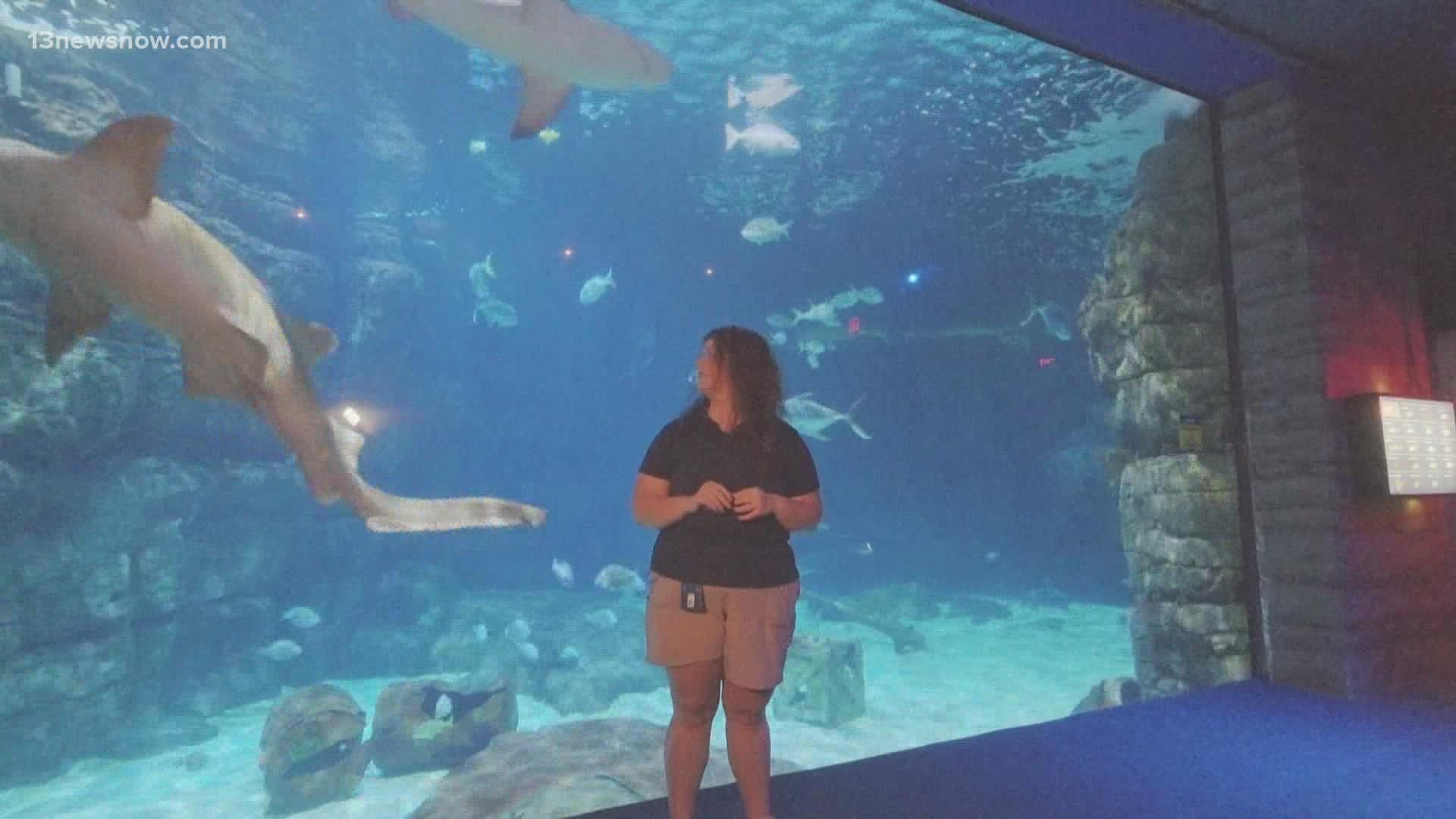VIRGINIA BEACH, Va. — Melanie Flanigan has worked for the Virginia Aquarium & Marine Science Center for two years, and in that time, has learned a lot about what makes the sharks in its tanks special.
From Mina the zebra shark to Homer the nurse shark, each one has its own quirks.
"Like White Margin, when you feed her, she gets the zoomies," Flanigan explained. White Margin is a female sandbar shark. "If you put a piece of fish in the water and she's really excited about [it], she will just start turning, again and again and again in a circle, and then she'll go for it, and then she'll run off with it."
Feeding time for the sharks is a lot more involved than you might think. The aquarists train the animals to swim up to a special target, and in some cases, accept food by hand.
One of the champions of hand-feeding is Mina, who lives in the Red Sea exhibit at the aquarium. Zebra sharks suck in food with a burst of suction, so Mina's teeth don't come close to the aquarists' fingers.
She likes herring, salmon, capelin, and clams. They feed her early in the day, trying to fill her up before they feed the eagle rays that share a tank with her; but even then, Flanigan said she likes to swim over and beg.
She knows specifically what her feeding target looks like -- she just wants the eagle rays' food too, as a treat.
Mina also likes her back scratched.
Flanigan said when they bring her into the hospital tank, she swims down and wiggles around on her back.
"She will just go in there, and there's sand in there, and she will start going on her back, kind of like a dog" Flanigan said. "We think that she's trying to get her eggs out and she also likes to have her back kind of scratched."
Zebra sharks and catsharks, which Flanigan also looks after, fall under the "carpet shark" umbrella. She said that's exactly what it sounds like: sharks that like to lie around on the sea floor.
Catsharks are small. Fully grown, they're still probably shorter than your arm, and thinner around. But they have some cool tricks: for one, they're biofluorescent.
We would need a blacklight to see their bright green glow, but catsharks can see each other like that all the time. They have to have a trick to find each other, since they usually live in the dark, pressurized parts of the sea floor.
The females can also have pups up to four years after mating. The aquarium has a few young catsharks now, who are just a few inches long.
Then, there are the big guys in the Norfolk Canyon aquarium. The biggest, coming in at over 9 feet long, is Homer the nurse shark.
"Such a ham," Flanigan said, looking at him. "He is kind of the sleepyhead around here."
We can attest: he yawned several times during our interview.
He finds good spots to lay in the exhibit, and settles in there, pumping water over his gills. Laying still is a special thing that nurse sharks can do. Most sharks have to keep moving forward to breathe.
Despite their reputation, there's a lot to love about these sharks.
"Overall, I think taking care of them is just being able to see their individualism, because they do have it," she said. "You think, 'a shark's a shark,' but no, it's... you see them and you're like, 'Oh, that's typical White Margin,' 'Oh Homer's in his usual spot, because that's where he likes to be.' So that's what I like about it."

